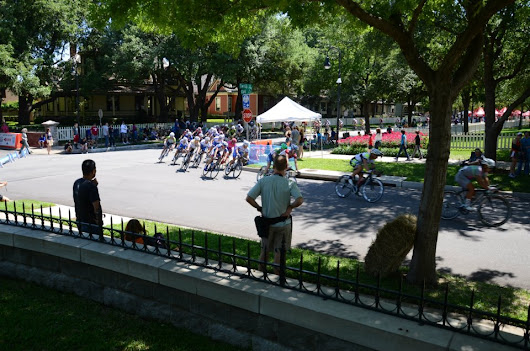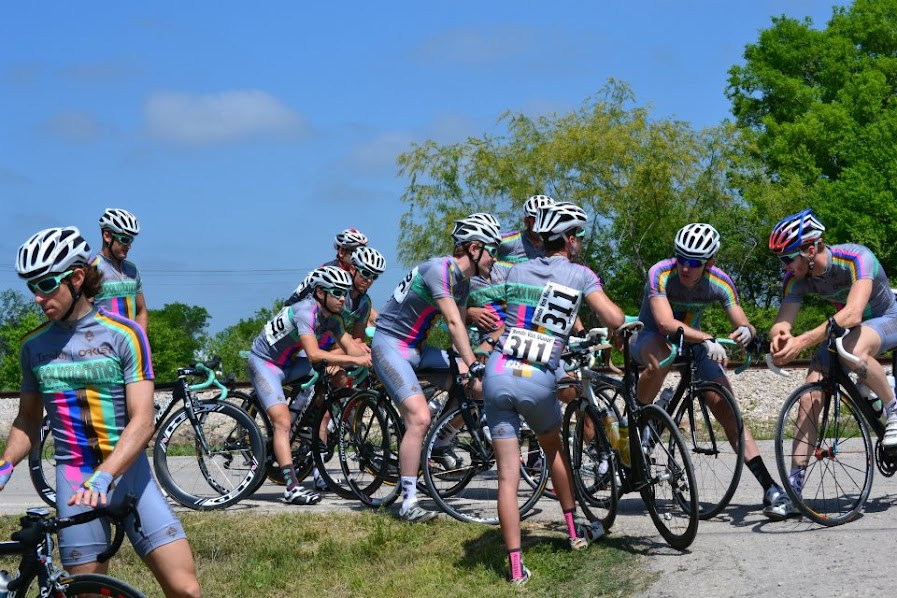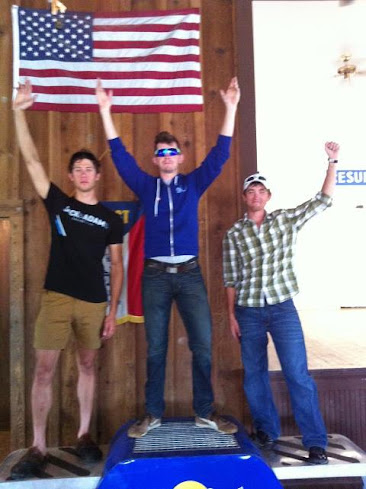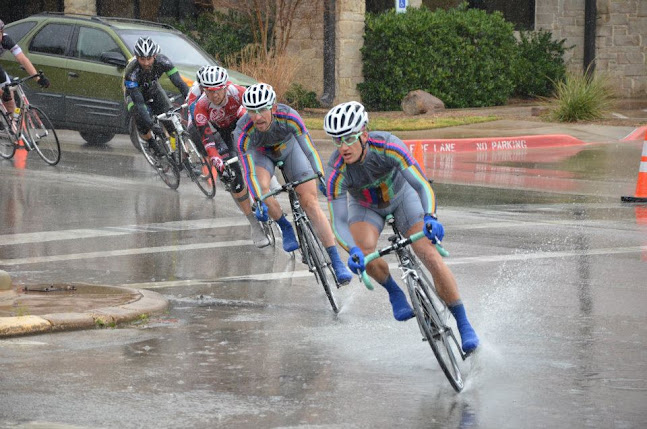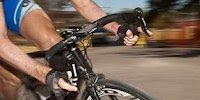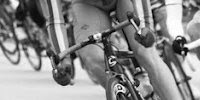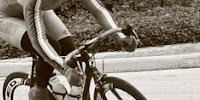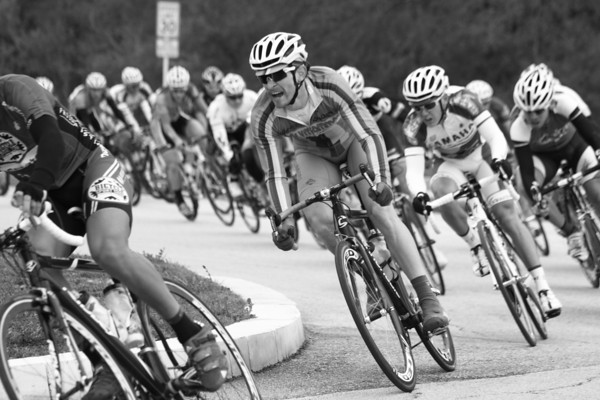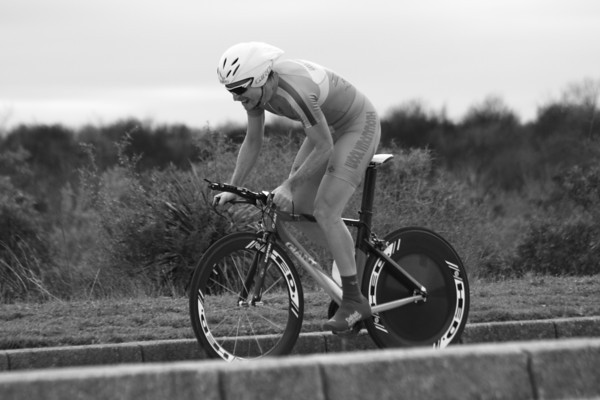In a very short two days, Texas racers will swarm the streets of Georgetown when Andrew Willis kicks off the first ever Georgetown Grand Criterium Festival. There has been tremendous buzz coming from the Holland Racing camp since the beginning of the racing season, when news of road crews busy on the streets of Georgetown was released. The road work demonstrates a commitment from the city to the racing community, which is a huge step in the process of getting national level races in our own backyard. There is a distinct possibility that, in the next few years, Texas racers will not have to travel 8 or more hours in order to attend the nearest NRC or NCC races.
 So what can we expect from the Criterium Festival this weekend? The course is a 1-mile long figure-eight with a total of 8 turns, almost a mirror image of the course that we raced on during April’s Matrix Challenge in Dallas (a recap of that race can be found here). The fresh pavement means the racing will be fast, and the technical nature of the course will only accentuate the extremes in speed. Any amount of braking at the front of the peloton will be felt 10-fold by the guys in the back. The first 5 guys may get through every turn without even touching their brakes; tracing smooth, fast arcs while holding most of their speed. Compare this to the last 5 in the line, who will be forced to shed as much as half of their momentum to avoid colliding with the riders in front of them, just so they can burn match after match, over and over again to stay on the wheel in front of them. Which of those sounds more appealing?
So what can we expect from the Criterium Festival this weekend? The course is a 1-mile long figure-eight with a total of 8 turns, almost a mirror image of the course that we raced on during April’s Matrix Challenge in Dallas (a recap of that race can be found here). The fresh pavement means the racing will be fast, and the technical nature of the course will only accentuate the extremes in speed. Any amount of braking at the front of the peloton will be felt 10-fold by the guys in the back. The first 5 guys may get through every turn without even touching their brakes; tracing smooth, fast arcs while holding most of their speed. Compare this to the last 5 in the line, who will be forced to shed as much as half of their momentum to avoid colliding with the riders in front of them, just so they can burn match after match, over and over again to stay on the wheel in front of them. Which of those sounds more appealing?
This fact alone makes the Georgetown Grand primarily a race of position, which Andrew Willis highlights the importance of in his discussion with Keith Hutchinson of The City of Georgetown (full article here):
Because what’s going to happen is that you’ll have varying levels of confidence and skill coming off that turn onto Fourth, people are going to be hitting their brakes differently, and there are going to be gaps forming, then they’re going to hit the uphill, and the top 10 or 15 racers, they’re going to be putting out the least amount of energy and the guys behind, that maybe got caught behind somebody less experienced, they’re going to be—in cycling they call it— burning matches.
Staging early will increase the odds of starting near the front, but it doesn’t absolutely guarantee a good starting position (it is a scientifically proven fact that not everybody can be at the front, P < 0.001). With that in mind, constantly look for opportunities to move up a few positions at a time. Although it proves to be easier from a technical sense, moving up on the straightaways while everybody else is sprinting toward the next corners is probably not the best use of a “match” and will likely leave you with an empty tank by the time the race is over. With that being said, look to the turns to take a few positions back. This does not mean diving into corners, which presents a nasty opportunity for your line to cross with the lines of everybody else in the peloton (i.e. it’s a good way to cause a crash). The best tactic for advancing will be when you can draw a faster line through the turn around somebody that is braking, letting your momentum carry you forward.
Wherever the cycling Gods slot you into the peloton heading into turn one, and whatever race you’re going to be doing, the racing is going to be fast from the gun, so a good warm-up is critical. If you have the engine or the team to do it, mass at the front of the race and make it hard for everybody for as long as possible. If you’re in the P1/2 race like me, starting near the front gives you the best likelihood of surviving the destruction that 15 Elbowz can cause on a field over the course of a 2 hour criterium.
As much fun as the racing is going to be for the racers, the festival environment that Georgetown offers is going to be even better for the fans. The short course ensures that spectators are never far from the action, and live music during the day will keep everybody entertained. Bring a cooler of beer and post-up in the historic town square to watch the races. Just let me know where you’re going to be so I know where to find a cold one when the racing is done. Whatever you do, spectating or racing, remember to thank the people at Holland Racing for putting on such a great race, and make sure to stop into some of the businesses in Georgetown to let them know that we’re grateful for their generosity so they’ll let us do this again next year.
Enjoy the races. I’ll see you out there.




